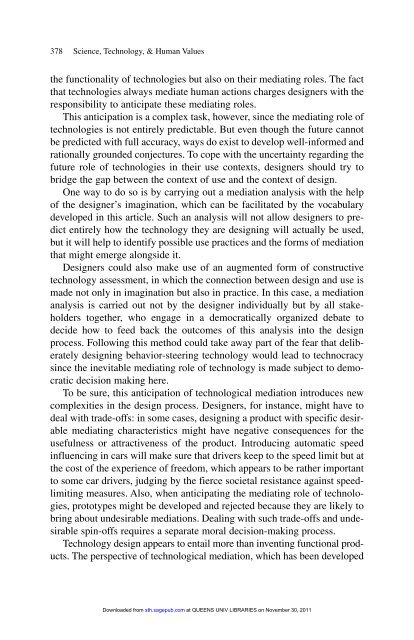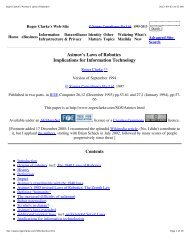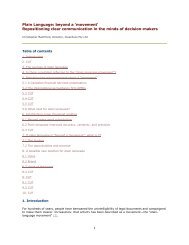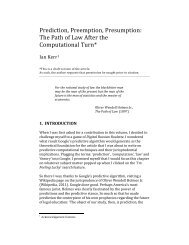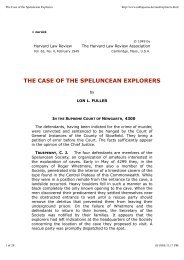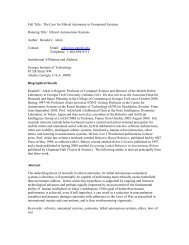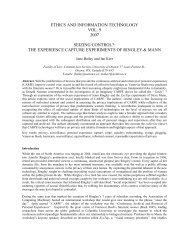Materializing Morality: Design Ethics and Technological Mediation.
Materializing Morality: Design Ethics and Technological Mediation.
Materializing Morality: Design Ethics and Technological Mediation.
Create successful ePaper yourself
Turn your PDF publications into a flip-book with our unique Google optimized e-Paper software.
378 Science, Technology, & Human Values<br />
the functionality of technologies but also on their mediating roles. The fact<br />
that technologies always mediate human actions charges designers with the<br />
responsibility to anticipate these mediating roles.<br />
This anticipation is a complex task, however, since the mediating role of<br />
technologies is not entirely predictable. But even though the future cannot<br />
be predicted with full accuracy, ways do exist to develop well-informed <strong>and</strong><br />
rationally grounded conjectures. To cope with the uncertainty regarding the<br />
future role of technologies in their use contexts, designers should try to<br />
bridge the gap between the context of use <strong>and</strong> the context of design.<br />
One way to do so is by carrying out a mediation analysis with the help<br />
of the designer’s imagination, which can be facilitated by the vocabulary<br />
developed in this article. Such an analysis will not allow designers to predict<br />
entirely how the technology they are designing will actually be used,<br />
but it will help to identify possible use practices <strong>and</strong> the forms of mediation<br />
that might emerge alongside it.<br />
<strong>Design</strong>ers could also make use of an augmented form of constructive<br />
technology assessment, in which the connection between design <strong>and</strong> use is<br />
made not only in imagination but also in practice. In this case, a mediation<br />
analysis is carried out not by the designer individually but by all stakeholders<br />
together, who engage in a democratically organized debate to<br />
decide how to feed back the outcomes of this analysis into the design<br />
process. Following this method could take away part of the fear that deliberately<br />
designing behavior-steering technology would lead to technocracy<br />
since the inevitable mediating role of technology is made subject to democratic<br />
decision making here.<br />
To be sure, this anticipation of technological mediation introduces new<br />
complexities in the design process. <strong>Design</strong>ers, for instance, might have to<br />
deal with trade-offs: in some cases, designing a product with specific desirable<br />
mediating characteristics might have negative consequences for the<br />
usefulness or attractiveness of the product. Introducing automatic speed<br />
influencing in cars will make sure that drivers keep to the speed limit but at<br />
the cost of the experience of freedom, which appears to be rather important<br />
to some car drivers, judging by the fierce societal resistance against speedlimiting<br />
measures. Also, when anticipating the mediating role of technologies,<br />
prototypes might be developed <strong>and</strong> rejected because they are likely to<br />
bring about undesirable mediations. Dealing with such trade-offs <strong>and</strong> undesirable<br />
spin-offs requires a separate moral decision-making process.<br />
Technology design appears to entail more than inventing functional products.<br />
The perspective of technological mediation, which has been developed<br />
Downloaded from sth.sagepub.com at QUEENS UNIV LIBRARIES on November 30, 2011


